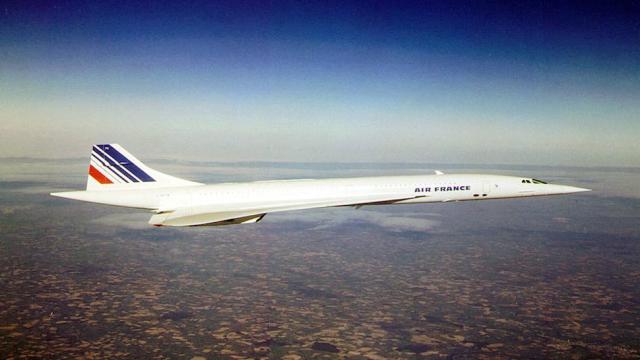We were promised supersonic flights. Today, we stay well below the speed of sound. We were promised transatlantic flights from New York to London in three and a half hours. Today, that flight takes us seven hours. We were promised the future of flying. That future hasn’t existed for 10 years. The last flight of the Concorde was on October 24, 2003, we’ve been flying on slow-haul planes since.
It’s not as simple as this, obviously, but the appearance and disappearance of the Concorde could be thought of as follows: Imagine that starting today, you couldn’t use your phone anymore. Instead, you suddenly have to go back to your flip phone. The transatlantic flights you take today? They’re Razrs.
The Concorde was created by Britain’s British Aircraft Corporation and France’s Aérospatiale in the early 1960s. Its first commercial flight wasn’t until 1976, but it stayed in service for 27 years for Air France and British Airways, the only two airlines who ever flew Concordes. In fact, in its entire history, only 20 Concordes were ever built.
Because the Concorde was only profitable for long distance flights, the fleet typically only flew between Paris or London and New York. But who cares about profits, it’s the technology of the jet that made it special. The Concorde used afterburners to get to supersonic speeds, reaching 2172km/h (commercial planes today cruise under 970km/h), the intake was able to hit Mach 2.0 airspeed (jet engines can only take in Mach 0.5 air), it had a drooping nose that would change its angle depending on takeoff or landing and the ogival delta-wing design was just stunning.
It wasn’t, of course, without its issues. If it were problem-free we’d still be flying them today. The Concorde was notoriously high maintenance, at times it was an engineering nightmare, it sucked down fuel like a flying Hummer with a gas leak would, its cockpit was complicated with knobs and dials of every kind, the outside of the plane would get hot because of air friction, there were radiation concerns because it flew so high and, worst of all, a Concorde jet suffered a horrific crash on July 25, 2000, where 113 people died, 109 being inside the aircraft.
The crash — the only fatal accident in Concorde’s history — marked the beginning of the end for the Concorde and still stains the memory of one of the world’s greatest technological marvels. Which is unfortunate because before the accident, the Concorde was considered one of the safest planes in the world. But after that fateful day, all Concordes were grounded pending the investigation of Air France Flight 4590 and the Concorde would never recover.
The Concorde’s legitimate issues, enough that it makes sense that we’ve put them in mothballs. But that doesn’t mean we still don’t feel a little bit like we’re living in the dark ages every time we stop onto any other aeroplane.
[BBC, BBC, Concorde Wikipedia, CNN, Air & Space Smithsonian]
Picture: AP
